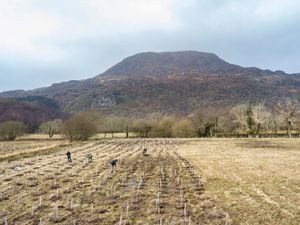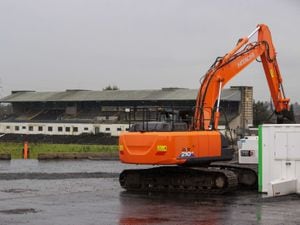Tens of thousands of trees planted by National Trust for climate and wildlife
The move is part of efforts by the charity to plant and establish 20 million trees by the end of the decade.

Tens of thousands of saplings have been planted by the National Trust to kickstart efforts to plant and establish 20 million trees by 2030 for climate and wildlife.
The charity pledged more than a year ago to boost tree cover over the next decade through planting and allowing wooded areas to grow back naturally, to help tackle climate change and create new homes for nature.
As efforts get under way, the trust said it had planted 60,000 trees in recent months despite the pandemic, in projects to provide food and shelter for wildlife and livestock, create coastal woodlands and curb flooding.

And the rate of planting will be accelerated after an initial planning phase, helped by £450,000 in public donations, the conservation organisation said.
The Trust is focusing on putting the “right trees in the right places” and minimising any release of carbon from disturbing the soil, and would also be fencing areas to reduce livestock grazing and allow for natural regeneration of woods.
Several projects are under way in Wales, the South West, South East and north of England, and Northern Ireland, and the conservation charity said it had identified sites for a further 1.5 million trees in the next couple of years.
John Deakin, head of woodland and trees at the National Trust, said: “The first two years of our 10-year plan was always going to be about doing the research and scoping out the right places to plant and establish trees – to try to ensure we maximise in balance the benefit to nature, regenerate landscapes or creating new woodlands near urban areas.

“Taking this time to plan means ensuring we avoid areas where trees might damage important existing habitat, or actually release carbon from certain soil types, like peat.”
He said it was also important that historic views and parklands were maintained appropriately.
The trust is also looking at expanding and linking existing woodland to help nature and identifying locations near towns and cities where many people could enjoy them.
Work to identify sites includes computer modelling, mapping and then walking the sites to get a true understanding of the lay of the land, he said.
Among the projects which have already started include a scheme at Sherborne Park Estate in Gloucestershire, where the trust is working with one of its tenant farmers to plant 9,000 trees and shrubs on eight acres of land.

Species including oak, field maple, rowan, wild cherry, wild pear, crab apple, hazel, and hawthorn are being planted to provide shelter and food for wildlife and livestock, fruit and nuts for human consumption and coppice for fuel and woodchip, while a “blossom circle” has also been put in.
More than 16,000 trees have been planted as part of a 125,000 tree project to create coast woodland and wood pasture on the north Devon coast, expanding existing areas of woods to help tackle the climate crisis and create corridors for wildlife to move along.
At Hafod Garegog, in North Wales, where land was reclaimed for agriculture in the Glaslyn estuary at Porthmadog in 1811, species such as aspen, willow and black poplar that can deal with wet conditions are being planted on the rush-covered land.

It is hoped the habitat will boost wildlife, connect up with existing ancient woodland, store carbon and slow the flow of water when there is flooding to protect surrounding landscape and communities.
The first projects which have got under way have had funding from partners including Cotswold Outdoor, Great Western Community Forest, Manchester City of Trees and People’s Postcode Lottery, and £70,000 of the money raised through the charity’s public Plant a Tree appeal.





